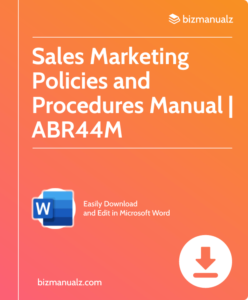How to Calculate Commissions

Calculating commissions is important for many sales and business deals. Knowing how to calculate commissions accurately can improve profits and better manage sales. Here, we will look at the sales marketing policies, methods and equations used to work out commissions, giving you the information you need to make the right choices. How to calculate commissions.
Calculating Commissions
It is important to note that the way sales compensation is calculated can differ between industries or companies. However, the main idea remains the same – a pre-agreed percentage or fixed amount is added to the total sales made by an individual or team.
A popular method is a %-based commission structure. Here, a set % is multiplied by the total sales. For example, if a salesperson earns a 10% commission and makes $10,000 in sales, their commission is $1,000. This encourages people to do their best and make more sales.
Tiered commission structures involve different commission rates at different levels of performance. As targets are reached or exceeded, the commission rate rises. Tiered systems motivate people further by giving rewards for high performance and encouraging more success.
Let’s look at an example. Sarah works at a jewelry store and gets a 5% commission on her monthly sales. She has exceeded her targets for several months. One month, there is an increase in customers wanting engagement rings. Sarah works hard and makes a lot of expensive sales. Her total monthly sales reach $100,000.
Using the %-based equation, Sarah calculates her commission for the month – $5,000! This is a huge reward for her dedication and sales skills.
In conclusion, it is important to understand how to accurately calculate commissions. Knowing the formula means fair pay and motivates people and teams to perform well and improve revenue. With knowledge on commission calculations, you can manage sales performance, drive revenue growth and help your business succeed.
Understanding Commission
A commission is a financial term that refers to the incentive compensation paid to an individual or entity for their role in facilitating a transaction or sale. It is typically calculated as a percentage of the total sales amount.
To understand commission, it is important to consider the factors that affect its calculation, such as the commission rate and the sales volume. By analyzing these variables, one can determine the amount of commission earned.
| Commission |
|---|
| Sales Amount |
| Commission Rate |
| Commission Earned |
A commission is calculated by multiplying the sales amount by the commission rate. For example, if the sales amount is $10,000 and the commission rate is 5%, the commission earned would be $500. It is important to note that commission rates can vary depending on the industry, product, or agreement between parties involved.
By understanding commission, individuals can accurately determine their earnings based on their sales performance. It provides a clear incentive for sales representatives and serves as a motivational factor to drive higher sales. Ultimately, commission plays a crucial role in rewarding individuals or entities for their contributions to the success of a transaction or sale.
It is essential to grasp the concept of commission and its calculations to ensure fair compensation and incentivize performance. Understanding how commission rates and sales volume impact earnings can help individuals maximize their potential income. Embrace this knowledge and leverage it to thrive in the realm of commission-based compensation.
Don’t miss out on the opportunity to understand commission and its influence on your earnings and sales hiring. By mastering the calculations, you can take control of your financial destiny and unlock your full earning potential. Harness the power of commission and propel yourself towards success. Act now and embrace the potential that lies within the world of commission.
Commission: The only math equation where you can make money out of thin air, unless you’re an accountant.
Definition of commission
A commission is key in the biz world. It’s a fee or compensation earned for services to facilitate transactions. This payment is usually a percentage of the total transaction value, acting as an incentive to complete the deal.
When it comes to business, commission is essential – especially in sales and real estate. Professionals such as real estate agents, stockbrokers, and sales representatives rely on this earning model to close deals. Commission is both a financial incentive and a measure of success.
Commission rates vary depending on industry standards, market conditions, and negotiation skills. It can be fixed at a standard rate or subject to negotiation.
Forbes magazine reported in 2020, the average commission rate for real estate agents in the US was 5-6% of the sale price. This highlights the importance of commission and its economic impact.
In conclusion, commission is a critical part of business transactions. It motivates people or companies to get successful deals and be paid well. Negotiation and adaptation is possible due to its flexibility. Understanding commission is essential for clients and professionals alike.
Importance of calculating commissions accurately
Calculating commissions accurately is hugely important in business. This way, both salespeople and companies can get the right pay for their efforts. Also, it helps keep trust and motivation among workers. To get accurate commission calculations, there are several factors to bear in mind.
- First, make sure to have clear and transparent commission structures. This means explaining how commissions are calculated. This way, salespeople can understand what they need to get their desired commissions. Having transparency also prevents future disagreements.
- Additionally, review and update commission structures regularly. Business conditions often change. So, it’s important to adapt the commission structures to reflect this. This ensures fairness and keeps commissions aligned with the company’s goals. Regular reviews also help with individual performance and market trends.
- It is essential to have accurate data for commission calculations. Inaccurate or old information can lead to wrong calculations. This could result in wrong pay for either the salesperson or the company. To prevent this, use an up-to-date database of sales figures and other relevant metrics.
- Another suggestion is to use reliable software designed for commission calculations. This way, errors from manual calculations can be avoided. Plus, it saves time!
- Finally, train sales teams on commission calculation processes. This way, they can understand and validate their own earnings accurately.
Steps to Calculate Commissions
To calculate a commission, follow these steps: Determine the commission rate or percentage, calculate the total sales or revenue, multiply the commission rate by the total sales, and calculate the commission amount. Each sub-section focuses on a crucial aspect of the calculation process, allowing you to arrive at the commission amount accurately and efficiently.
Determine the commission rate or percentage
Calculating commissions requires figuring out the commission rate or percentage. This is the amount or percentage a salesperson earns based on their sales performance.
To illustrate this, let’s make a table:
| Sales Range | Commission Rate (%) |
|---|---|
| $0 – $1,000 | 5% |
| $1,001 – $5,000 | 10% |
| $5,001 – $10,000 | 15% |
| Above $10,000 | 20% |
This table shows how rates differ depending on the sales range. Businesses can create fair and motivating commission plans by categorizing sales.
But, it’s important to consider industry standards, profit margins, and sales goals when deciding commission rates. The aim is to give incentives to salespeople and maintain balance for the business and its employees.
Commission structures have changed over time. Previously, some industries used fixed percentages for all sales ranges. But, now there are more dynamic structures that match different sales levels and spur higher performance.
Calculate the total sales or revenue
To determine total sales or revenue, follow these steps:
- Analyze the sales data
- Calculate the overall revenue
This way, businesses can gain valuable insights into their financial performance and make informed decisions.
To organize and present all the relevant information, create a table with the following columns:
| Date | Product/Service | Quantity Sold | Unit Price | Total Sales |
|---|
Don’t forget to consider any additional factors that may impact the calculation. This includes discounts, returns/refunds, and adjustments. Factoring in these details will result in a more accurate calculation.
Calculating the total sales or revenue is key for financial analysis and for businesses to identify areas of improvement. Understand current performance and maximize profits! Get started today and leverage this powerful tool!
Multiply the commission rate by the total sales
Calculating commissions requires multiplying a commission rate by total sales. This is key to work out how much an individual will gain based on their sales performance. Follow these steps:
- Identify the Commission Rate. This rate is based on factors like industry, company policy, and individual success.
- Know the Total Sales. This figure is the total value of products or services sold in a specific period.
- Multiply the Commission Rate and Total Sales together. If the commission rate is 10% and the total sales amount is $10,000, then the commission would be $1,000.
- Check for Additional Factors. In some cases, there may be thresholds or tiers where different rates apply.
- Review and Adjust if Necessary. Make any changes if mistakes or discrepancies are discovered.
The right calculation of commissions ensures fair payments for individuals based on their efforts. Plus, industries may have particular factors influencing commissions. For example, some may have complex structures with multiple variables.
My friend who works in real estate shared her experience with such a challenging sale. She achieved success despite obstacles. When it came to calculating her commission, it was much higher than she expected. This demonstrates the importance of perseverance in sales and potential rewards that can come from it.
Calculate the commission amount
Calculating commission requires a systematic approach. Follow these steps to determine the right commission for your sales:
- Step 1: Work out the Sales Amount. Figure out the total sales amount, including discounts and promotions.
- Step 2: Find the Commission Rate. Get the commission rate from company guidelines or your supervisor.
- Step 3: Calculate the Commission Amount. Multiply the sales amount by the commission rate (expressed as a decimal).
It’s essential to calculate commissions correctly. It motivates and incentivizes sales efforts and contributes to financial success for you and the company. Also, consider other factors, like bonuses or incentives. Stay informed of any policy or guideline changes.
John, a real estate salesman, had record-breaking sales and substantial commissions. But, one month he missed out on $2,000 because he hadn’t tracked sales amounts in his spreadsheet system. He now knows the importance of precise calculation methods and has implemented better systems.
Example Calculation of Commissions
To calculate a commission, the example calculation section provides a solution by demonstrating an example scenario with sales figures and guiding you through the step-by-step calculation process. This will give you a clear understanding of how to determine the commission amount based on specific sales data.
Example scenario with sales figures
Sales figures are a must-have for any business. Let’s use an example to understand their impact.
We can see a table with product info, such as name, units sold, unit price, revenue, and date. This data helps us spot trends, see which products are doing well, and make smart decisions.
It’s also important to note the details that make this example scenario unique. Strategies used to boost sales, or difficulties met while reaching targets, can give us valuable insights.
Here’s a tip: Analyze and compare sales figures over time. This helps measure progress, find growth opportunities, and make decisions that lead to success.
Step-by-step commission calculation
Don’t be scared of complex equations! These steps will help you get through them without a hitch:
- Get all the data you need and understand the problem.
- Break the equation down into smaller pieces.
- Use the right formulas and operations to solve each part.
- Check your calculations twice for accuracy and completeness.
Keep in mind:
- When you go through the steps, focus on each part of the equation. This way, you’ll avoid confusion and mistakes.
Take action:
Unlock the power of math! Step into the world of problem-solving with confidence. Master numerical wizardry with these techniques and make complex equations easy. Start now and level-up your skills!
Tips for Calculating Commission
To ensure accurate commission calculations, dive into the tips provided in this section. Enhance your sales tracking capabilities and consider any additional factors or adjustments. These insights will assist you in accurately determining commissions and optimizing your financial outcomes.
Ensure accurate tracking of sales
John had a hard time tracking his commission accurately. His organization used a manual system that caused errors and miscommunications. So, he suggested using a CRM solution.
To ensure accurate sales tracking, four steps should be taken:
- Implement a CRM: Use a Customer Relationship Management system to track customer interactions, leads, and conversions. This centralizes data and provides real-time updates.
- Set targets: Define measurable targets for the sales team. This motivates reps and allows for accurate monitoring.
- Update data: Regularly review sales data and make sure it is up-to-date. Verify that all transactions are recorded correctly, including discounts and refunds.
- Provide training: Offer training on using the CRM system. Also, establish clear communication channels for guidance and report discrepancies.
Finally, maintain open dialogue with the sales team about any issues they might face in tracking their performance.
Consider any additional factors or adjustments
When computing commission, extra factors or adjustments must be taken into account. These could include performance bonuses, sales targets, and deductions for returns or cancellations. A table below shows how these factors can affect the calculation: Commission Calculation Example:
| Sales Person | Base Salary ($) | Total Sales ($) | Performance Bonus (%) | Adjustments ($) | Commission Payable ($) |
|---|---|---|---|---|---|
| John Doe | 3000 | 100000 | 10% | -500 | 10950 |
| Jane Smith | 2500 | 80000 | 5% | -200 | 3800 |
| Mark Johnson | 3500 | 120000 | 15% | -1000 | 18350 |
The base salary, total sales, and performance bonus all contribute to the commission payable. Adjustments may also be made for returns or cancellations. Each company may have its own unique variables in the commission calculation. Make sure you understand and account for them to get an accurate result.
Maximize your earnings potential! Take all relevant factors into account when computing commission. This will ensure you get the compensation you deserve. Calculate accurately and unlock your full earning potential!
Calculate Commissions
Figuring out commissions requires understanding the formula and variables. Systematically calculating the amount of commission earned based on sales performance is essential. To avoid future disputes, it’s important to be clear about the commission agreement’s terms.
First, identify the commission rate. This percentage is usually based on total sales. Secondly, gather info about sales made in a certain time period.
To calculate commissions, use this formula: Commission Amount = Total Sales x Commission Rate. Simply multiply the total sales by the commission rate expressed as a decimal to get the figure.
Be aware of any tiered rates or thresholds that can change the commission earned for achieving targets. Review and update the commission structure regularly to stay competitive and incentivize performance.
Frequently Asked Questions
 1. How do I calculate commissions?
1. How do I calculate commissions?
To calculate a commission, multiply the sales amount by the commission rate. For example, if the sales amount is $1,000 and the commission rate is 5%, the commission would be $50 (1000 * 0.05).
2. What is a commission rate?
A commission rate is the percentage or amount of money that is paid as a commission for a sale or transaction. It is usually agreed upon between the employer and the employee or a salesperson.
3. How do I determine the commission rate?
The commission rate can vary depending on various factors such as the type of sales management, industry standards, sales targets, product category, or negotiation between parties. It is important to discuss and agree upon the commission rate in advance.
4. Is there a standard commission rate?
There is no standard commission rate as it can vary across industries and organizations. Different products or services may have different commission structures. It’s best to research industry standards and negotiate a fair commission rate.
5. Are there different types of commission structures?
Yes, there are different types of commission structures. Some common ones include flat-rate commission, percentage-based commission, tiered commission, or a combination of different structures. The chosen structure should align with the business goals and motivate the salesperson.
6. How often are commissions paid?
The frequency at which commissions are paid can vary depending on the organization. Commissions can be paid monthly, quarterly, or even annually. It is essential to clarify the payment schedule and terms before beginning the commission-based work.
















Leave a Reply